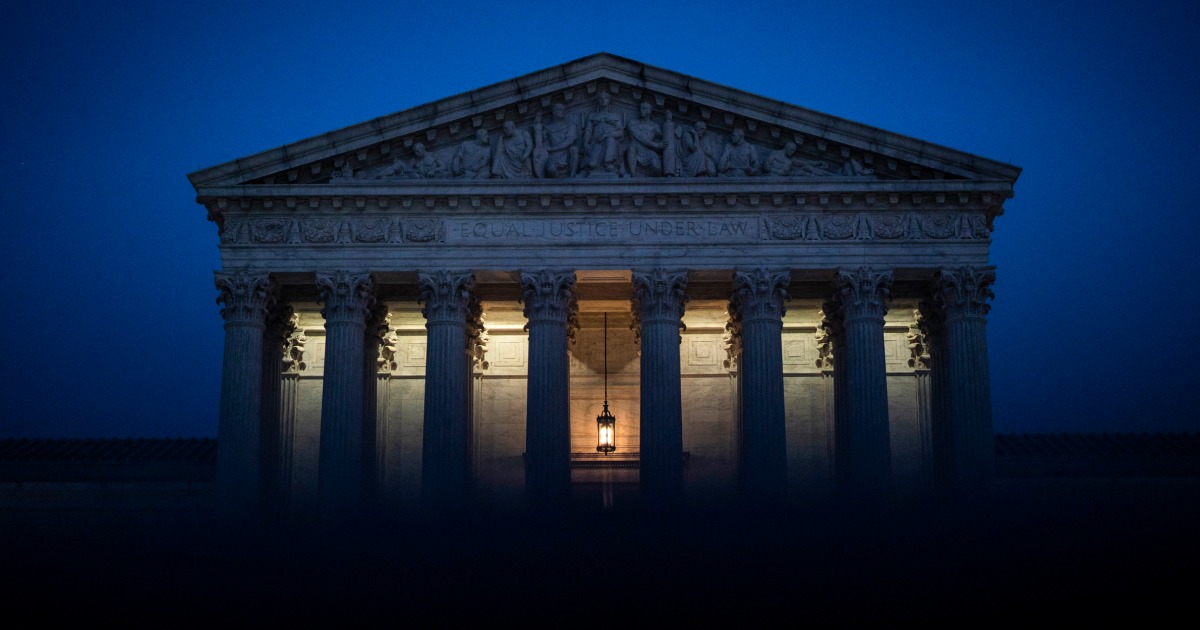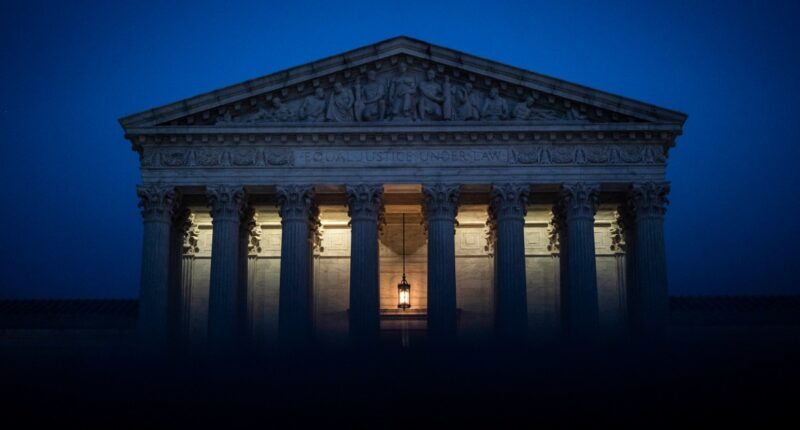
WASHINGTON — Back in 1923, the Supreme Court had issued 157 rulings by May 1 in a term that started the previous fall.
On the same date a century later, the current justices, facing a firestorm of scrutiny on multiple fronts, have disposed of just 15 cases, fueling speculation about why they are falling behind.
In fact, the court has decided fewer cases at this point of the term — which begins each October and ends in June — than at any time in the last 100 years, according to numbers compiled by Supreme Court stats guru Adam Feldman.
There is one big caveat: The court hears oral arguments in substantially fewer cases now than it did in previous decades. In the 1922-23 term, the court heard 205 cases, noted Lee Epstein, a political scientist at the University of Southern California Gould School of Law. This term it was a mere 59.
Nevertheless, the slow pace at which rulings have been issued this term has started to attract scrutiny from court watchers.
All of the court’s major cases are yet to be decided, on issues like President Joe Biden’s plan to forgive student loan debt, affirmative action in college admissions, voting rights and the knotty question of whether owners of creative businesses can refuse to work on same-sex weddings.
Important cases are also pending on environmental, Native American and immigration issues.
The number of rulings so far this term is lower than it was on the same day in even the most recent terms, which also lagged behind the norm. In both 2022 and 2021, the court had decided 25 cases by May 1, according to Feldman. In 2019, the court had decided 28 cases, and in 2018 it was 30.
“I think the court is slower this year, but it has been pretty slow in recent years, too,” said Erwin Chemerinsky, dean of the University of California, Berkeley School of Law.
“It does mean that there again will be a flurry of blockbuster decisions in June,” he added.
Justice Brett Kavanaugh, a member of court’s 6-3 conservative majority, downplayed the delay in issuing decisions in January, saying at a public event that the court was “off and running” and that he was confident all the rulings would be issued by the end of June.
The court usually decides the easier cases first, those in which no justices dissent, but this term, of the 14 cases the court has issued full rulings on, only eight have been unanimous. The court was divided 5-4 in two cases and 6-3 in three others. The court dismissed one case without issuing a written ruling.
Court experts differed on whether the crunch would have any impact on how the court actually decides cases. It could lead to shorter rulings, fewer separate concurring or dissenting opinions, or even narrower decisions in which the court avoids broad pronouncements on the law.
The court has been roiled over the last year by the leak of a draft of the seismic abortion decision that overturned the landmark Roe v. Wade ruling, an inconclusive investigation into the leak, protests against justices at their homes and increased scrutiny of ethical lapses.
The justices have also been sidetracked from their daily work by a series of high-profile cases that have arrived at the court on an emergency basis via what has been dubbed the “shadow docket.”
The most recent unexpected addition to the schedule concerned the ongoing case brought by anti-abortion advocates seeking to overturn the Food and Drug Administration’s approval of abortion pill mifepristone.
The court, in a 7-2 vote on April 21, blocked a ruling that would have threatened availability of the drug, but only after spending a week mulling what to do.
Stephen Vladeck, a law professor at the University of Texas at Austin School of Law who has written a new book called “The Shadow Docket,” said that the increased number of such emergency cases has a broad impact on how the court operates, including “why the court is taking longer compared to its historical norms for releasing decisions.”
The justices have 44 cases to decide in the next few weeks before the traditional hard stop at the end of June. The next day on which rulings are expected is May 11.
The court faces a challenge to finish in time in part because the justices are often divided and rulings are often held up as a result, according to John Elwood, a lawyer who argues cases before the court.
“The court has a lot of important cases this term that I think will prompt separate writing by the justices, and that slows down the pace of decision,” he said.
It is possible the court could sidestep some big rulings. It is likely to dismiss a case seeking to keep in place a Trump-era immigration policy, for example. That is because the policy, known as Title 42, was premised on the Covid-19 public health emergency that Biden is expected to end on May 11.
There is also a possibility for different reasons that the court could duck rulings on the scope of immunity that internet companies have for content posted by users and an attempt to curb the power of state courts to rule on election rules.
Source: | This article originally belongs to Nbcnews.com









